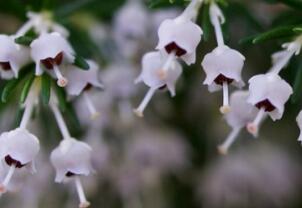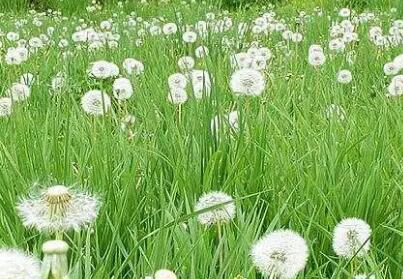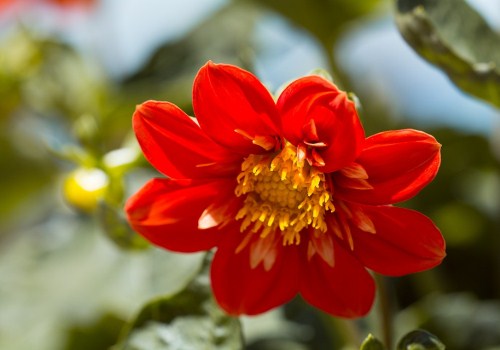How does ou Shinan, known as the "queen of South African endemic species", be raised?
Photinia is a kind of flower originating from South Africa. Because of its beautiful shape, it is very popular with people. Although it does not have the elegance of orchids or the bright color of rhododendrons, clusters of flowers gather together, like strings of bells, swinging with the wind and emitting fragrance. Ou Shinan is very friendly to flower-growing lazybones, why do you say so? Because it is very adaptable, potted plants are relatively simple. How does ou Shinan, who has the laudatory name of "Queen endemic to South Africa", be raised? Let's take a look at the specific breeding methods.

1. Brief introduction of ou Shinan
1. The nickname of ou Heather: Erica.
2. Origin: Photinia is produced in the Mediterranean, northern Europe, southern Africa and other regions. Now there is a nature reserve of European heather in northern Germany, called Luneburg heather prairie, which is very famous and is also a tourist resort.
3, flower color, flower language: ou Shinan's design and color is white with red, flower language is lonely, but also symbolizes lonely, happy love, is self-contradictory.
4. Main value: Photinia officinalis has medicinal value, edible value and ornamental value.
If heather is used as medicine, it can play a role in sterilization and sedation, not only helping the excretion of body waste, but also whitening and nourishing beauty. If you bathe with it, it can also relieve fatigue and soothe muscles and bones.
If it is edible, it is generally used to make honey or tea reference, with other scented tea, is a very good choice, not only good taste, but also beauty.
The ornamental value of Photinia is needless to say, its flowers are very good-looking, with a fresh taste, whether raised at home or in the courtyard, have played a certain decorative role.
Second, how to raise the heather?
1. Various modes of reproduction
The control methods of Photinia are divided into cuttings, sowing, striping, ramet, different breeding methods, planting methods are also different, general sowing and cuttings are more common. If sowing, it is generally planted in pot in spring, and the growth temperature is 15-25 ℃ when it can germinate in half a month. Cuttings are usually carried out in summer or autumn and winter, and they can take root in about a month.
2. Soil requirements
Generally raise heather, then it is recommended to choose acidic soil, at the same time, the soil must be fertile, loose, drainage and air permeability are good.
3. Lighting conditions
The growth of heather needs enough light, if the light is not good, it may not blossom or do not look good. If you want to bloom and look good, you should give about 3 hours of light a day a month before flowering. In summer, the light is too strong, it is not recommended to be placed outdoors for a long time, to be properly shaded to prevent sunburn.
4. Watering
Heather watering is best not to use unboiled water, generally the sun has been basking in the water is the best. Watering times and water quantity are mainly determined by the wettability and season of the basin soil, not too much nor too little. Especially in the period of exuberant growth, more water is needed. In the rainy season, we should always check the basin soil, so as not to cause too much water to cause rotting roots. In winter, the watering interval can be a little longer, we choose once every half a month, in order to increase air humidity, we can spray water around the leaves. Similarly, summer should also appropriately cool down, increase air humidity, and make the leaves greener.
5. Fertilization
Photinia is not a fertilizer-loving flower, so as long as all kinds of nutrients in the soil are balanced and adequate, they can generally grow normally. But if you think of good flowering and exuberant growth, you can apply fertilizer properly during this period of time to ensure that its growth nutrition can keep up with the growth rate.
In addition, usually we have to keep it in a ventilated environment, too dark and damp is easy to give birth to diseases and insect pests, such as red spiders, aphids and so on. At the same time, be sure to keep the leaves of the whole plant clean, so that insects can be prevented.
Time: 2019-03-13 Click:
- Prev

When will dandelions be sown? What are the main points of planting methods?
Dandelion is a kind of plant that everyone is very familiar with, especially when I was a child, when the wind blew, the seeds of the dandelion were scattered everywhere. I thought the scene was very beautiful. Dandelion is actually a blindly traditional Chinese medicine, which has the effect of clearing away heat and detoxification. in addition to the wild ones on the roadside, there are also some growers who concentrate on planting dandelion.
- Next

Introduction to the planting method of zinnia (zinnia)! What's the difference between marigold and marigold?
Zinzincao, also known as zinzhihua, is an annual herb of Compositae. It has beautiful plant shape, large flowers, many colors and long flowering period. It can be planted in flower beds, flower borders, flower belts, flower pots and courtyards. So, how to grow zinnia? What's the difference between marigold and calendula?
Related
- Fuxing push coffee new agricultural production and marketing class: lack of small-scale processing plants
- Jujube rice field leisure farm deep ploughing Yilan for five years to create a space for organic food and play
- Nongyu Farm-A trial of organic papaya for brave women with advanced technology
- Four points for attention in the prevention and control of diseases and insect pests of edible fungi
- How to add nutrient solution to Edible Fungi
- Is there any good way to control edible fungus mites?
- Open Inoculation Technology of Edible Fungi
- Is there any clever way to use fertilizer for edible fungus in winter?
- What agents are used to kill the pathogens of edible fungi in the mushroom shed?
- Rapid drying of Edible Fungi

